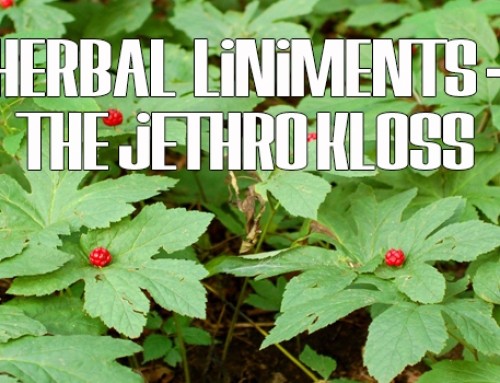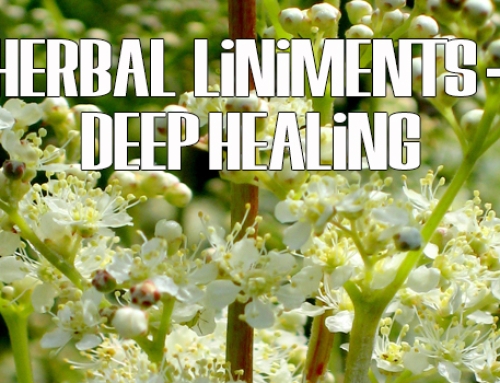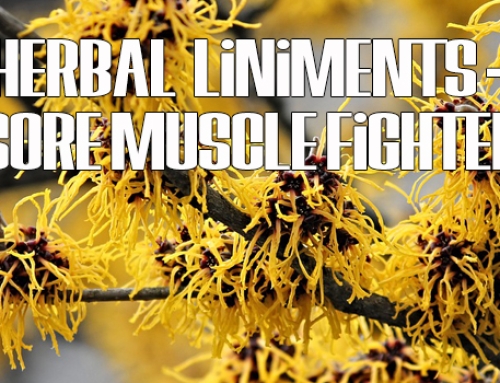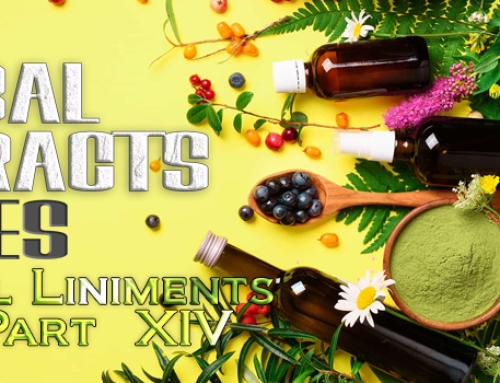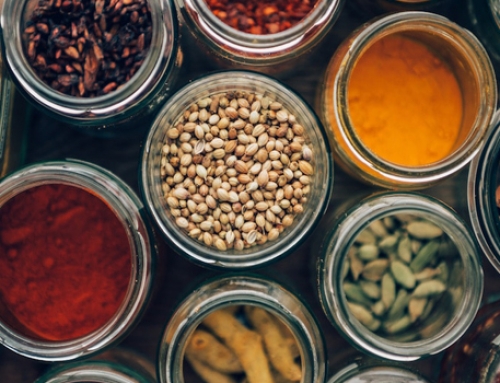What on earth are herbal extracts?
There are certain health promoting compounds that can be found in the plants around us, whether they be wild or cultivated. Herbal extraction is the process of drawing out the therapeutic components of a chosen herb or plant. In many cases, the beneficial compounds we want are tucked away within fibrous material of the plant that is challenging for our digestive systems to fully break down. You can use herbal extracts to help solve this problem by increasing bio-availability.
Each extraction can be singular (one plant or herb and concentrated compound) or there can be a combination of herbs together for a larger desired effect, but most of the time you will see these in a liquid based form ready to be ingested.
The liquid used to extract an herb is called a solvent or the carrier, or in traditional herbal language the menstrum. it is the means by which the wanted compounds can be best introduced to your bodily systems. Common solvents are water, alcohol, vinegar, and glycerin. Each solvent has specific things it’s good . . . and not so good . . . at drawing out, so you use different ones based on the type of herb you’re working with, and the desired effect you want have.
We’ll start with the next type of extraction . . .
Distillations – Part IX
Now if you have any time seen (in movies, tv shows or in real life) those moonshine stills that extract the alcohol out of it’s source materials (corn, potatoes, plums, peaches etc.) then you are getting close to the idea of distilling herbs into what is called Hydrosol.
Now what we have in mind, is not alcohol or even essential oils as the end result, (although following certain steps in the distillation process and copious amounts of source product can be another result experienced) we are looking at this for the simple extraction of the compounds found in certain herbs that are best harnessed via the distillation process.
So this is not so much moonshiner content, but more so chemistry set type of content that is found below.
This Is An Involve Process
Distilling herbs at home can be fun and rewarding once you have properly put into place the equipment required to distill. Even with a small still, you can enjoy a little essential oil and lots of hydrosol, or floral water.
There are ways to jimmy-rig your own with a boiling pot and hosing and metal nozzles, or with a certain chemistry set knowledge be able to do it with beakers and flames. Probably the best way to do this is go to a reputable manufacturer of distilling units (out of copper or steel) that you can buy all the components that have been retrofitted to precise measurements so you can optimally set each batch of herbs to steep and distill.
And if you don’t have access to a still (yet!) infusions – as we have detailed in the links below – are a wonderful way to enjoy the aromatic and medicinal properties of herbs.
There are two main styles of distillation:
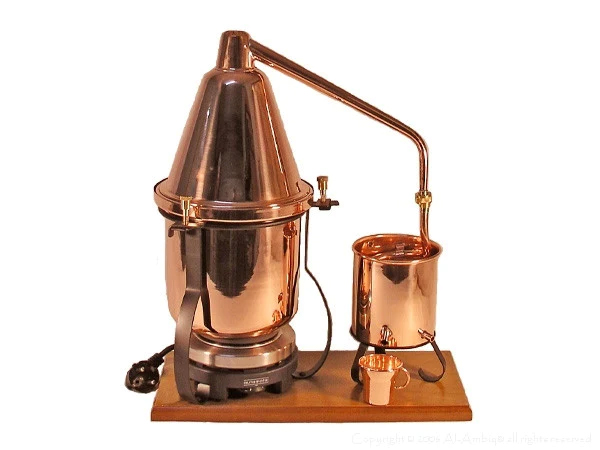 Hydro-distillation and steam distillation. Smaller stills, ideal for small-batch and home distillation, are most often the hydro- kind.
Hydro-distillation and steam distillation. Smaller stills, ideal for small-batch and home distillation, are most often the hydro- kind.
The steam is pushed through the plant material, pulling the volatile (a fancy word for describing something that can evaporate) oils out of the plant and carrying them up into a tube.
Steam carries these concentrated essences through a tube from the distillation chamber to the condensing chamber, where cold water surrounds the tube. This heat surrounded by cold causes the condensing to occur, transforming the steam-and-vaporized-oil mixture into a water-and-essential-oil mixture.
Same compounds, different state: vapor to liquid.
Once the water-and-essential-oil collects in a glass or stainless steel container, it naturally begins to separate: The essential oil floats to the top, and the fragrant water, or hydrosol, sinks to the bottom.
It takes a lot of plant material to make essential oil. So when we’re doing small-batch distillation, our main product is hydrosol.
Hydrosol, a so-called byproduct of distillation, actually packs a healthy little punch itself. Though less concentrated than pure essential oil, hydrosols contains the same plant essences that essential oils do – in a milder form.
Infusing, on the other hand, is an easy way to enjoy the powerful properties of plants. When you infuse an herb, you’re simply harvesting the herb and letting it sit in an oil like olive oil, coconut oil or grapeseed oil.
Here’s how to do it
Most plants can be distilled with water-steam distillation. It can be also utilized with direct-steam distillation, water-steam allows for the most gentle process at atmospheric pressure and at temperatures well below 100°C, that is around 96°C. This method prevents the overheating of the plant material, provided the 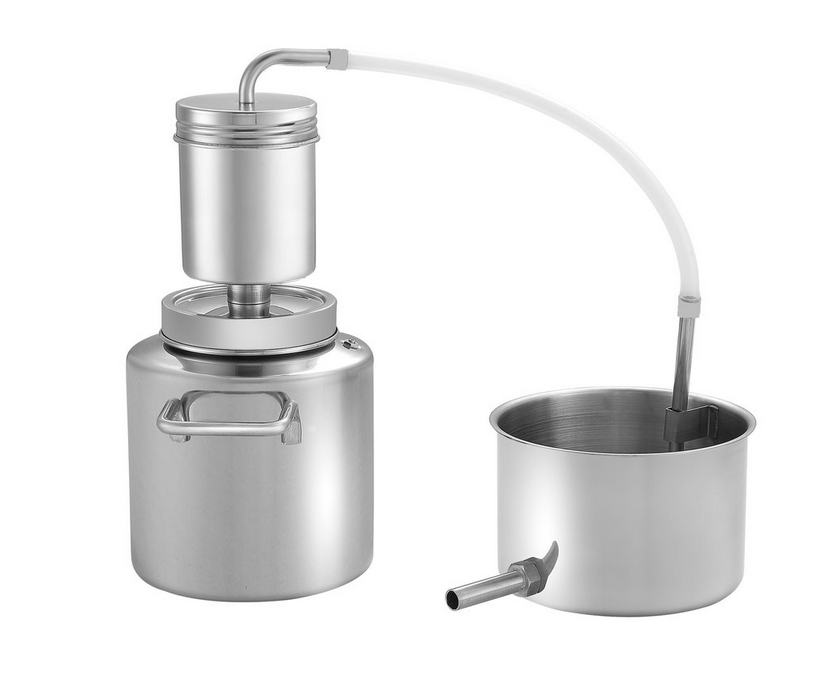 retorts are well insulated, so that the fire below only heats the water, but not the sides of the still. However, this method is seldom used commercially, because the gentler parameters mean a substantially prolonged distillation time. In addition it requires knowledge that only comes from experience with your still and its adjustments in relation to the heat applied and the requirements of each individual plant, that is, you cannot just leave the still, each distillation is a living thing, an act of alchemy. Not just a mere press on a button on a separate steam generator, and a timer set for the shortest possible time.
retorts are well insulated, so that the fire below only heats the water, but not the sides of the still. However, this method is seldom used commercially, because the gentler parameters mean a substantially prolonged distillation time. In addition it requires knowledge that only comes from experience with your still and its adjustments in relation to the heat applied and the requirements of each individual plant, that is, you cannot just leave the still, each distillation is a living thing, an act of alchemy. Not just a mere press on a button on a separate steam generator, and a timer set for the shortest possible time.
The retort is of stainless steel, you can place it over the heating source, however, only the very bottom is heated by the fire. The sides are insulated from the outside. In the case of a water-steam distillation, we fill the water, then fit perforated stainless steel grids into the retort, well above the water level.
The plant material can be fitted tightly and uniform into the retort. The steam passes through the plant material, carrying the volatile compounds with it. Moving upwards, the steam and essential oil moves through the ‘gooseneck’ towards the condenser unit, a stainless steel coil immersed in water. The condensation process has to be gentle, to avoid that the oils ‘burn’ on a pipe too hot which can happen if the water in the cooler gets too hot. Therefore one has to adjust the cooling water temperature. This is done by a constant flux of water. Cold water is added from the bottom, hot water allowed to flow out from the top, as the water always be hotter in the beginning of the cooling process, that is on the top where the condensation process starts. The adjustment of the cooling water flow is an important part of the process.
The condensate liquefies during it travel down the coil towards the exit. Here, it is collected in the first separator, the so-called ‘florentine’ vase. (which is missing in the stainless steel version above) This device is designed to separate the essential oils of the plant material, being lighter than water, from the hydrolate, hydrosol or floral water. This device has two outlets. One at the top, which remains closed during distillation, and one on the bottom. The latter one curves upwards, and is open during distillation. Through a funnel the condensate fills the florentine (not pictured), and the essential oil collects on the top. When the liquid in the florentine reaches the upper curved level of the lower outlet, the hydrolate below starts to flow and is collected continuously, whereas the essential oil accumulates in the top region of the florentine, from where it can be collected from the top tap. For the final separation use a glass separator.
A fast distillation might liberate the more volatile bulk of the oil, maybe even 85-95% of it, however it is just the least volatile components which elute later on, that have a profound role to play in the final product and which complete the oil. For commercial purposes, of course, it doesn’t pay to distill for example for 4-5 hours, when it can be done in 15-20 minutes.
In this series you will be able to see and gain recipes for your home apothecary remedies that will become the mainstay in your household. Here’s what you can see and learn more of:
- Teas – Infusions and Decoctions
- Tinctures
- Glycerites
- Herbal Syrups
- Herbal Oils & Salves
- Herbal Vinegars
- Herbal Honeys
- Oxymels
- Distillations
- Elixirs
- Electuaries
- Herbal Soaks
- Compresses & Poultices
- Liniments
Come and join us in bringing back the knowledge known by our ancestors and practiced for the health and benefit of those that came before us!


